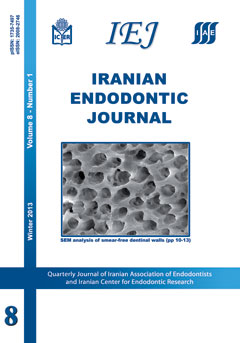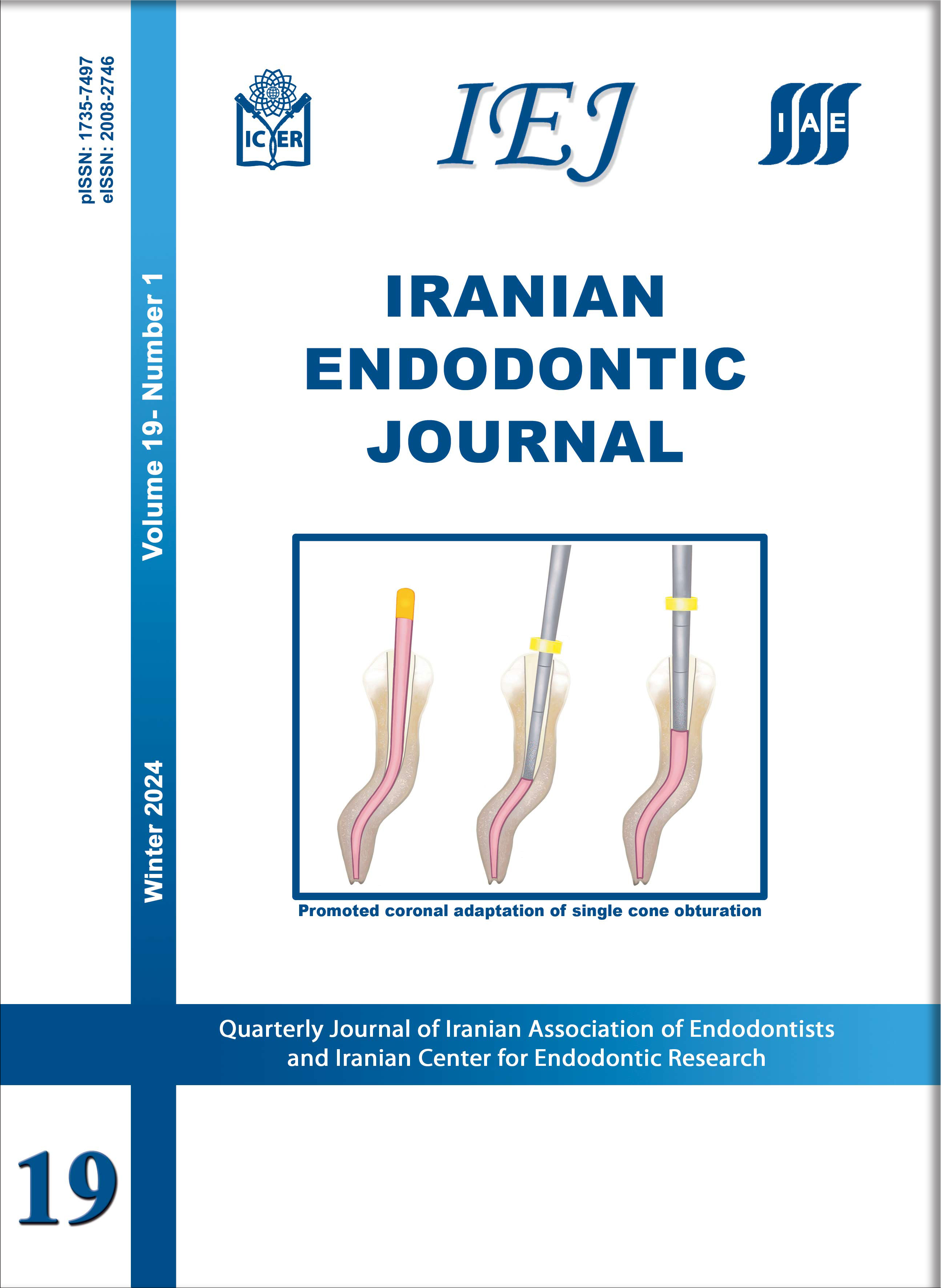Twenty Years of Research on Mineral Trioxide Aggregate:A Scientometric Report
Iranian Endodontic Journal,
Vol. 8 No. 1 (2013),
20 January 2013,
Page 1-5
https://doi.org/10.22037/iej.v8i1.3971
Introduction: Mineral trioxide aggregate (MTA) has been suggested for root-end filling, vital pulp therapy, apical plug, perforations repair, and root canal filling. Since the introduction of MTA in 1993, many studies about this material have been published. The aim of this survey was to illustrate statistical information about published articles in PubMed-index journals vis-à-vis the various aspects of this biomaterial. Material and Methods: A PubMed search was performed to retrieve the relative articles from 1993 to August 2012. The data of each article including publication year, journal name, number of authors, first author name, affiliations and study design were recorded. Citation of each article till 2009 was obtained from Scopus and Google scholar databases. Data were analyzed to determine the related scientometric indicators. Results: In total, 1027 articles were found in PubMed-indexed journals which show considerable increase from 2 papers in 1993 to 139 in 2011. While ~62% of articles had no level of evidence, only ~5% could be classified as having the highest level of evidence (LOE1); however, the majority of LOE1 articles originated from Iran (~1%: n=10). Journal of Endodontics, as the top rank journal, published 31.7% of MTA related articles. The majority of articles were four-authored (19.6%). Most of the articles originated from USA (21.9%), Brazil (18.5%) and Iran (8.76%). The average number of citation for the top ten articles from Scopus was 231. Conclusion: This data demonstrates that during the past two decades, research on this novel endodontic biomaterial had a rapid positive trend especially during the last 5 years. Further high-level evidence articles for the various clinical applications of MTA would result in superior clinical decision making and stronger scientific-based endodontic practice.




